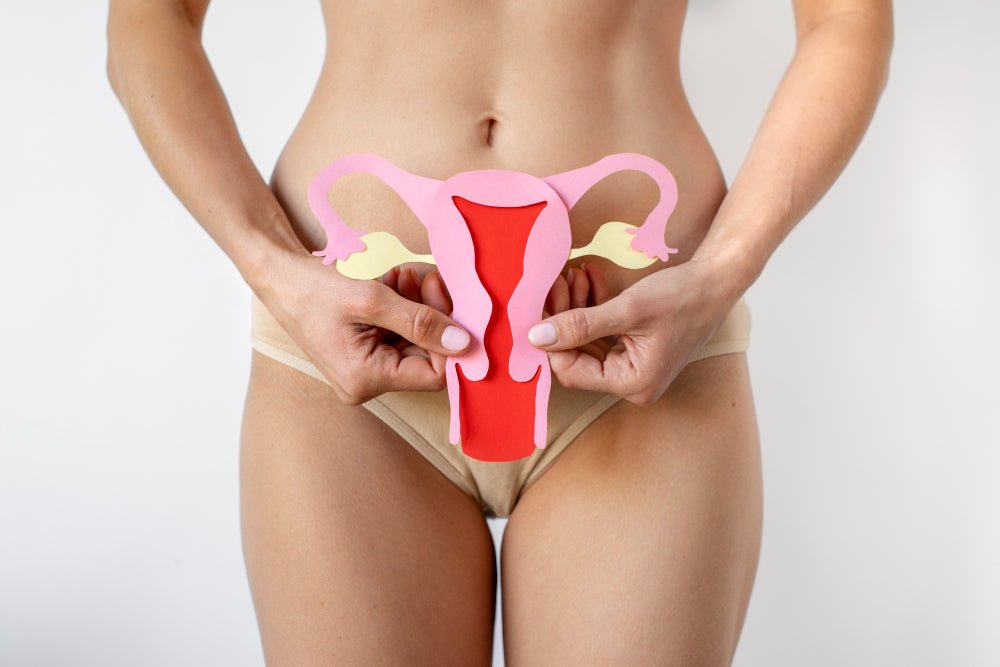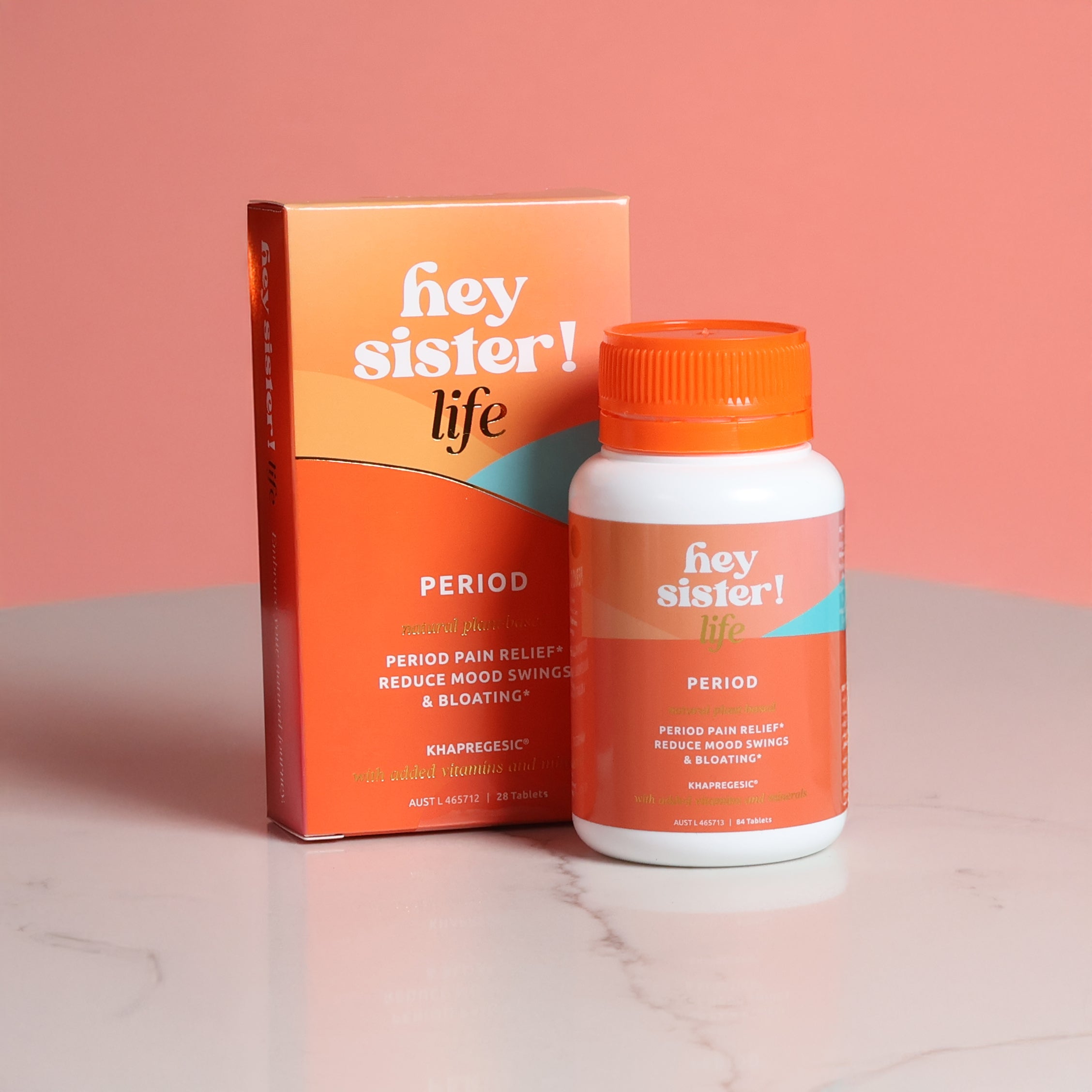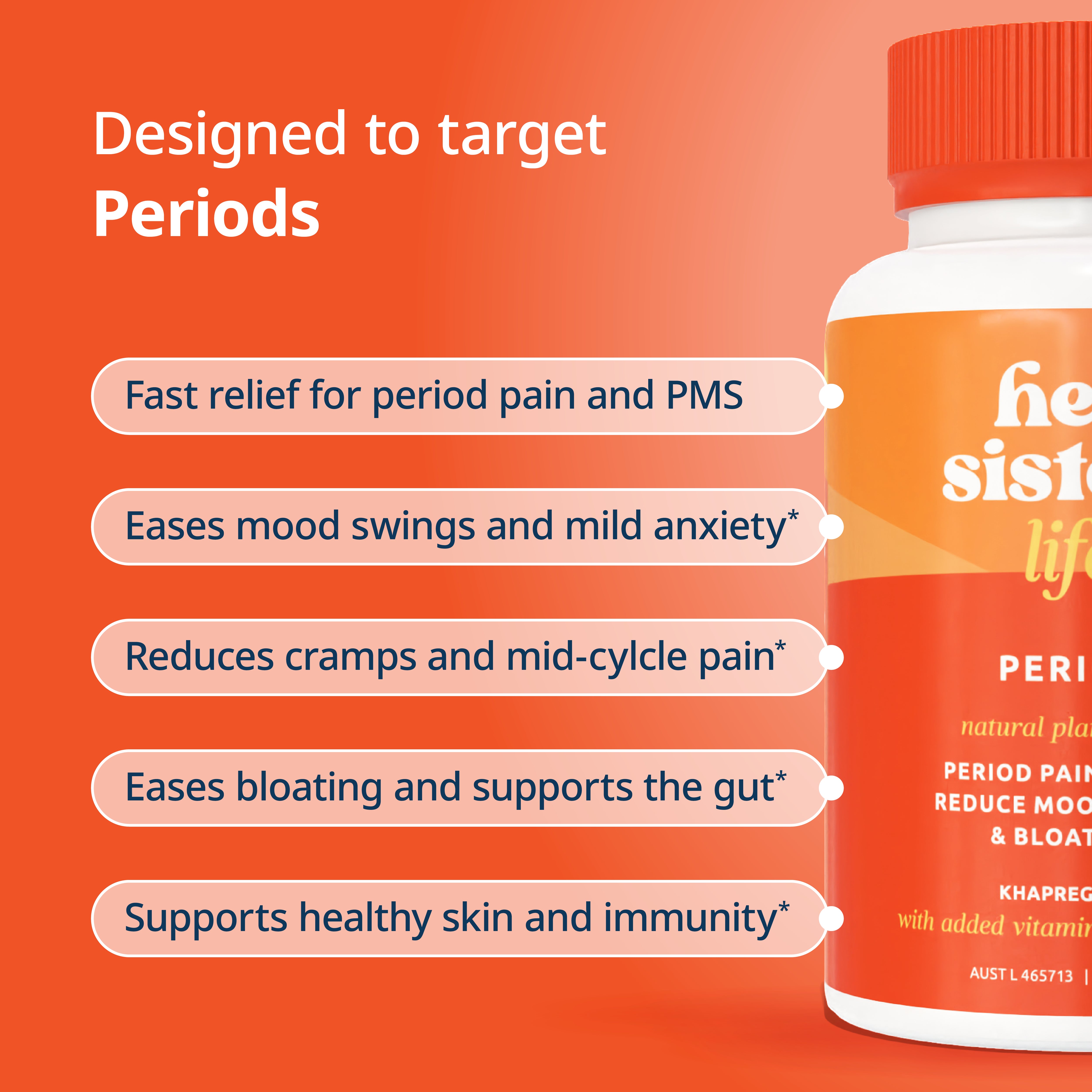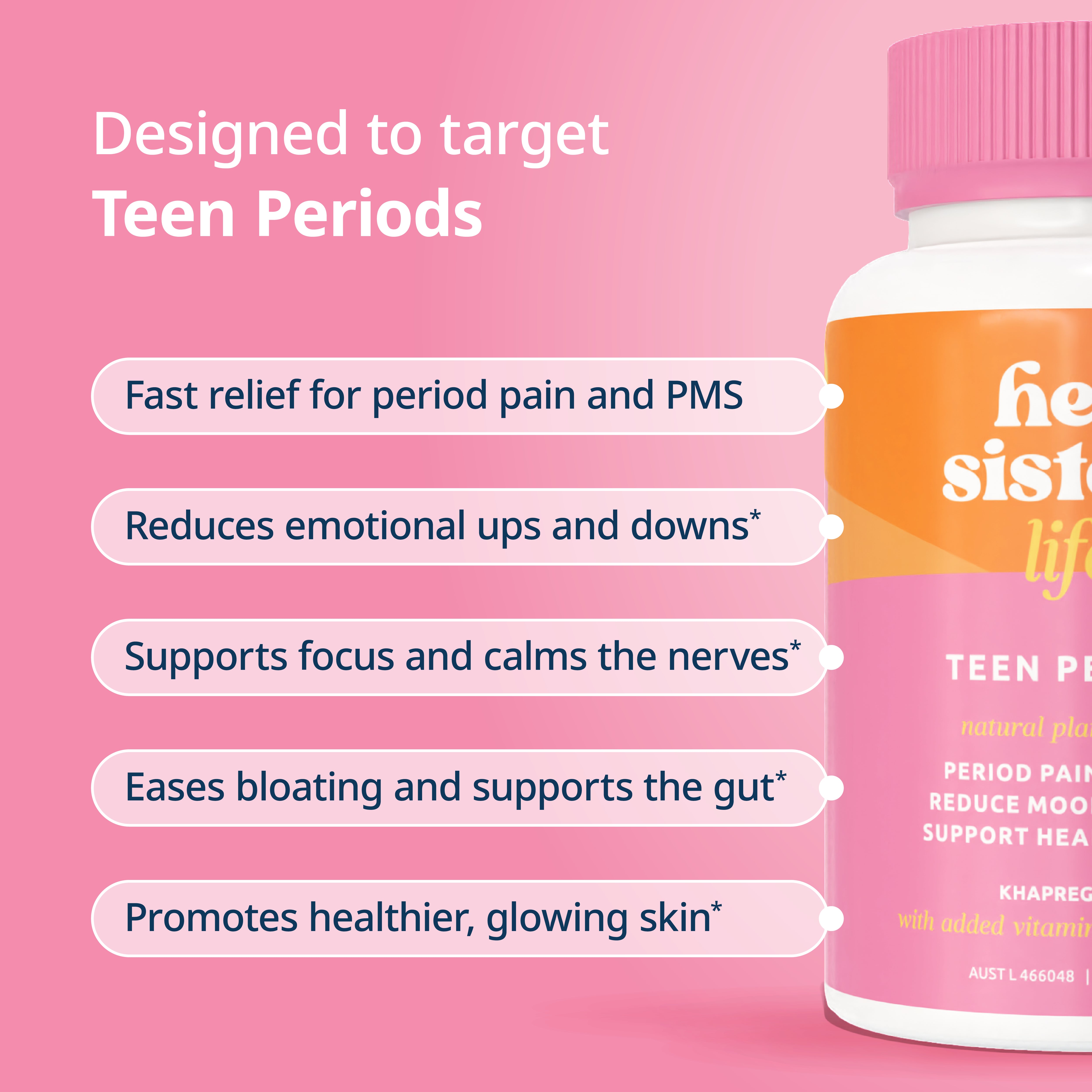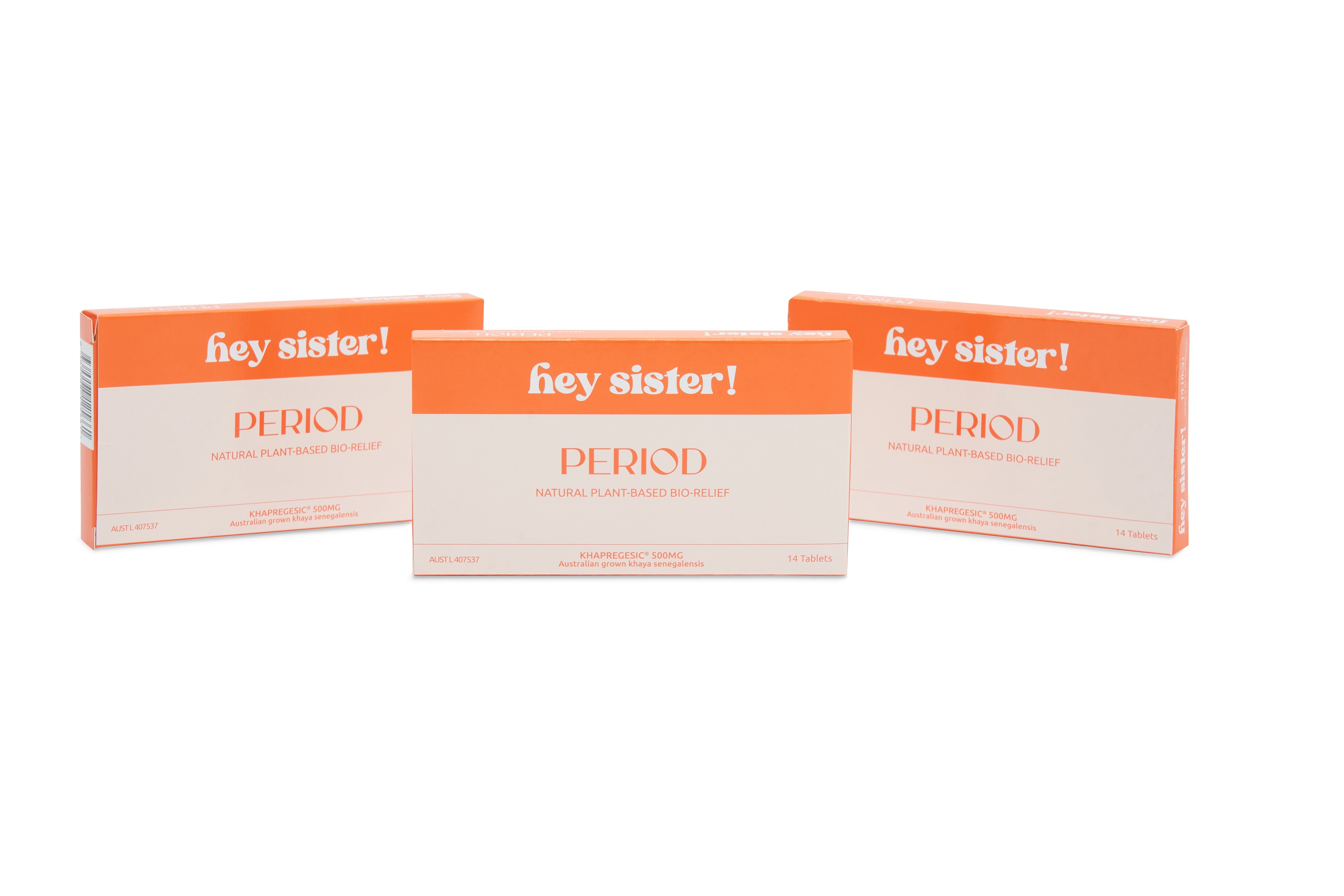¿Sabías que 1 de cada 7 mujeres australianas sufren dolores menstruales severos a causa de la endometriosis ?
El dúo dinámico: dieta y períodos menstruales
El ciclo menstrual no es un acontecimiento mensual común y corriente: es una sinfonía de cambios hormonales y ajustes corporales orquestados por los maestros del sistema endocrino. El estrógeno y la progesterona, los protagonistas de esta gran producción, marcan el tono de esta danza orquestada. Sin embargo, lo que a menudo pasa desapercibido es el papel que desempeñan nuestras elecciones alimentarias en esta representación.
Los ácidos grasos omega-3, las notas suaves de esta sinfonía hormonal, abundan en los pescados grasos, las semillas de lino y las semillas de chía. Su potencial para reducir la inflamación ofrece una melodía relajante que alivia el crescendo de los cólicos y las molestias menstruales.
Las frutas y verduras, ricas en antioxidantes, forman el vibrante coro de esta sinfonía menstrual. Su virtuoso desempeño consiste en combatir el estrés oxidativo y la inflamación, ofreciendo un respiro durante el ciclo menstrual.
Una hidratación adecuada garantiza que el ritmo de la sinfonía se mantenga en su punto justo. El agua, directora de esta gran interpretación, ayuda a eliminar toxinas y mantiene la orquesta hormonal en perfecta armonía.
Los alimentos con un índice glucémico bajo, como los cereales integrales y las legumbres, mantienen estables los niveles de azúcar en sangre, evitando las montañas rusas hormonales que pueden empeorar los calambres.
Durante el período, los niveles de hierro pueden caer drásticamente y hacer que te sientas fatigada. Incorpora alimentos ricos en hierro, como espinacas, lentejas y carne roja, para mantener tu energía.
Inflamación: el huésped no invitado
Ahora, hablemos del invitado inesperado que suele arruinar esta actuación sinfónica: la inflamación. Cuando el cuerpo detecta cambios hormonales durante el ciclo menstrual, responde con un acompañamiento inflamatorio. Desafortunadamente, esta inflamación suele exacerbar la intensidad de los calambres y el malestar, lo que añade un giro no deseado al ciclo.
Un estudio observacional publicado en Nature concluyó que la mayoría de las mujeres sufren calambres moderados a severos durante el período típico .
Los alimentos inflamatorios que se deben evitar
Ciertos alimentos pueden actuar como desencadenantes y avivar la inflamación. Los alimentos procesados y con alto contenido de azúcar, junto con el exceso de cafeína y alcohol, pueden agravar la inflamación durante el ciclo.
La conexión mente-cuerpo: estrés e inflamación
El estrés, un intruso habitual en nuestra vida acelerada, también puede provocar inflamación. Incorpore técnicas de relajación como yoga, meditación o respiración profunda para mantener a raya el estrés y la inflamación.
El enigma: la endometriosis
Bienvenidos al corazón del misterio: la endometriosis, una enfermedad que ha permanecido incomprendida y subdiagnosticada durante demasiado tiempo. Imaginemos que las células que recubren el útero (endometrio) deciden emprender un viaje para explorar nuevos territorios dentro de nuestro cuerpo. A veces, se instalan en zonas como las trompas de Falopio, los ovarios o incluso los intestinos. Estas células rebeldes forman lesiones dolorosas, similares a un acertijo dentro de la intrincada novela de la salud de la mujer.
¿Un artículo de investigación reciente analiza si su dolor menstrual severo podría en realidad ser endometriosis?
La formación de la endometriosis: una trama desvelada
La endometriosis es como una novela de misterio cautivadora: la trama da giros inesperados. Durante el ciclo menstrual, estas células endometriales desplazadas responden a señales hormonales, imitando las del útero. Crecen, se descomponen y sangran, al igual que sus contrapartes. Sin embargo, a diferencia de las células del útero que pueden salir del cuerpo a través de la menstruación, estas células no tienen adónde ir. Esto provoca inflamación, cicatrices y la formación de adherencias o lesiones dolorosas.
El papel de la genética
Las investigaciones sugieren que la genética puede desempeñar un papel importante en la predisposición de algunas mujeres a padecer endometriosis. Si su madre o hermana ha tenido endometriosis, sus probabilidades de desarrollarla podrían ser mayores.
El misterio del sistema inmunológico
La respuesta del sistema inmunitario también puede contribuir al enigma. En algunas mujeres, el sistema inmunitario no reconoce ni elimina las células endometriales fuera del útero, lo que permite que el trastorno progrese.
Descubriendo al intruso: ¿Dónde se puede encontrar la endometriosis?
La endometriosis, la invitada no invitada de esta historia, se puede descubrir en diversas zonas más allá del útero. Estos son los lugares habituales en los que estas células extraviadas hacen sentir su presencia:
- Ovarios : Los ovarios a menudo albergan quistes endometriales, conocidos como endometriomas.
- Trompas de Falopio: El tejido endometrial puede causar bloqueos e inflamación en las trompas de Falopio.
- Intestino: Cuando el tejido endometrial se adhiere al intestino, puede provocar síntomas y dolor gastrointestinal.
- Peritoneo pélvico : el tejido delgado que recubre la pelvis puede albergar implantes endometriales, lo que provoca dolor e inflamación.
La búsqueda de alivio: opciones de tratamiento para la endometriosis
Cuando la endometriosis se hace presente, es fundamental adoptar un enfoque proactivo para controlar y aliviar sus efectos. A continuación, se indican algunas opciones de tratamiento:
- Manejo del dolor : Los analgésicos de venta libre pueden ofrecer un alivio temporal de los calambres y el dolor.
- Medicamentos para el dolor menstrual : Medicamentos comunes como el ibuprofeno o el paracetamol pueden proporcionar un alivio efectivo del dolor menstrual.
- Terapia hormonal : las píldoras anticonceptivas, la terapia hormonal o los agonistas de GnRH pueden ayudar a regular las hormonas y controlar los síntomas.
- Cirugía : La cirugía laparoscópica puede eliminar tejido endometrial y adherencias, proporcionando alivio a largo plazo en algunos casos.
- Tratamientos de fertilidad : Para quienes luchan contra la infertilidad debido a la endometriosis, la fertilización in vitro (FIV) podría ser una opción.
Domando la tormenta : Cómo aliviar el dolor menstrual intenso y la endometriosis
Para quienes padecen dolores menstruales severos, y en particular para quienes enfrentan la implacable tormenta de la endometriosis, hay esperanza e innovación a la mano:
- Tratamiento integral del dolor : un enfoque múltiple que incluya analgésicos, ajustes dietéticos y técnicas de reducción del estrés puede brindar un alivio significativo.
- Remedios naturales para los dolores menstruales : considere usar remedios naturales como bolsas de agua caliente, infusiones de hierbas o aromaterapia para obtener un alivio calmante.
- Fisioterapia : La fisioterapia del suelo pélvico puede aliviar la tensión muscular y el malestar asociados con la endometriosis.
- Terapias alternativas: La acupuntura, el yoga y la meditación han demostrado ser prometedores para controlar el dolor y mejorar el bienestar general.
- Remedios para los calambres : Explore varios remedios como la terapia de calor, ejercicios suaves y estiramientos específicos para aliviar los calambres.
- Cambios en el estilo de vida : el ejercicio regular, una dieta equilibrada y el control de los niveles de estrés pueden tener un impacto positivo tanto en el dolor menstrual intenso como en la endometriosis.
En esta exploración vertiginosa de la dieta, los períodos y la enigmática endometriosis, hemos sido testigos del poder del conocimiento y la innovación para dar forma a nuestra experiencia. Acepta tu ciclo, escucha las señales de tu cuerpo y defiende tu salud. Juntos, desafiemos las normas, rompamos el silencio y creemos una sinfonía armoniosa de salud y felicidad. ¡El escenario está listo y tú eres la protagonista de esta extraordinaria producción! 🌟

